Best smart air conditioners in 2025
The best smart air conditioners can be controlled from your smartphone or with Alexa and Google Assistant
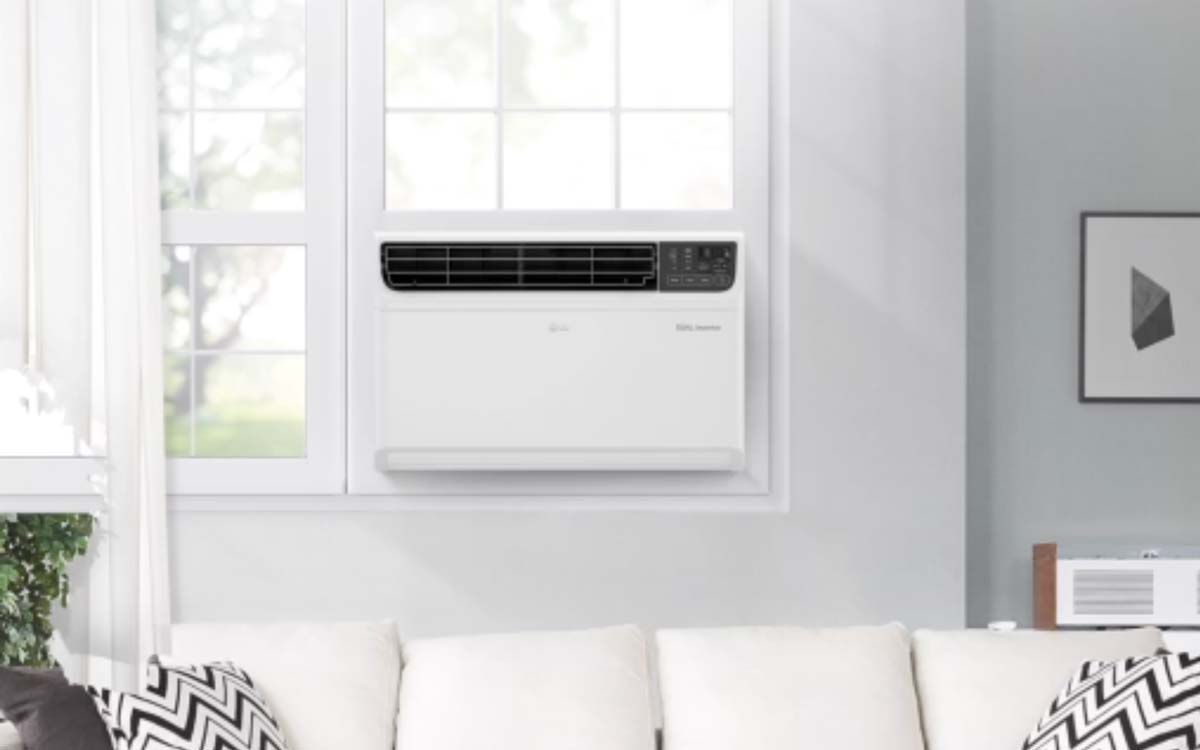
- The quick list
- Best overall
- Best for large rooms
- Best for small rooms
- Quietest air conditioner
- Matter-compatible
- Best portable AC
- Also tested
- Smart air conditioner controllers
- How we test
- What size air conditioner should you buy?
- How does an air conditioner work?
- How much does a smart air conditioner cost?
- Types of air conditioners
- Air conditioner deals
For those who don't have central air, a window or portable air conditioner is essential for keeping your home or apartment cool during the summer. I should know — my house is nearly 90 years old, and has never been retrofitted, so I have to rely on window air conditioners.
That's why I've been testing a bunch of the best smart air conditioners for the past few years, to see just how well they keep me and my family comfortable, all while saving me money on my electric bill.
My new top pick is the Midea U air conditioner, which has a unique U shape that not only makes this the easiest air conditioner I've ever installed, but it provides better insulation and helps to keep things quieter, too. It's also the most efficient window air conditioner we've tested.
If you need something for a much larger room, then I recommend the LG Dual Inverter air conditioner: not only does it look sleek, but it's very powerful, and comes in the widest range of sizes, so you have plenty of options depending on your home. I've had the same unit for seven years, and it's still going strong.
If you already have a window air conditioner that works well, but you want to be able to control it remotely, then skip on down to our section on smart air conditioner controllers. These small devices, usually around $100, can turn older air conditioners into smart A/Cs, so you can monitor and control them remotely.
I and my colleagues have tested all the models in this guide, using them for one (or more) summers to keep our homes cool, checking to see how easy they are to install, how loud they are when in use, and how efficiently they operate.
The quick list
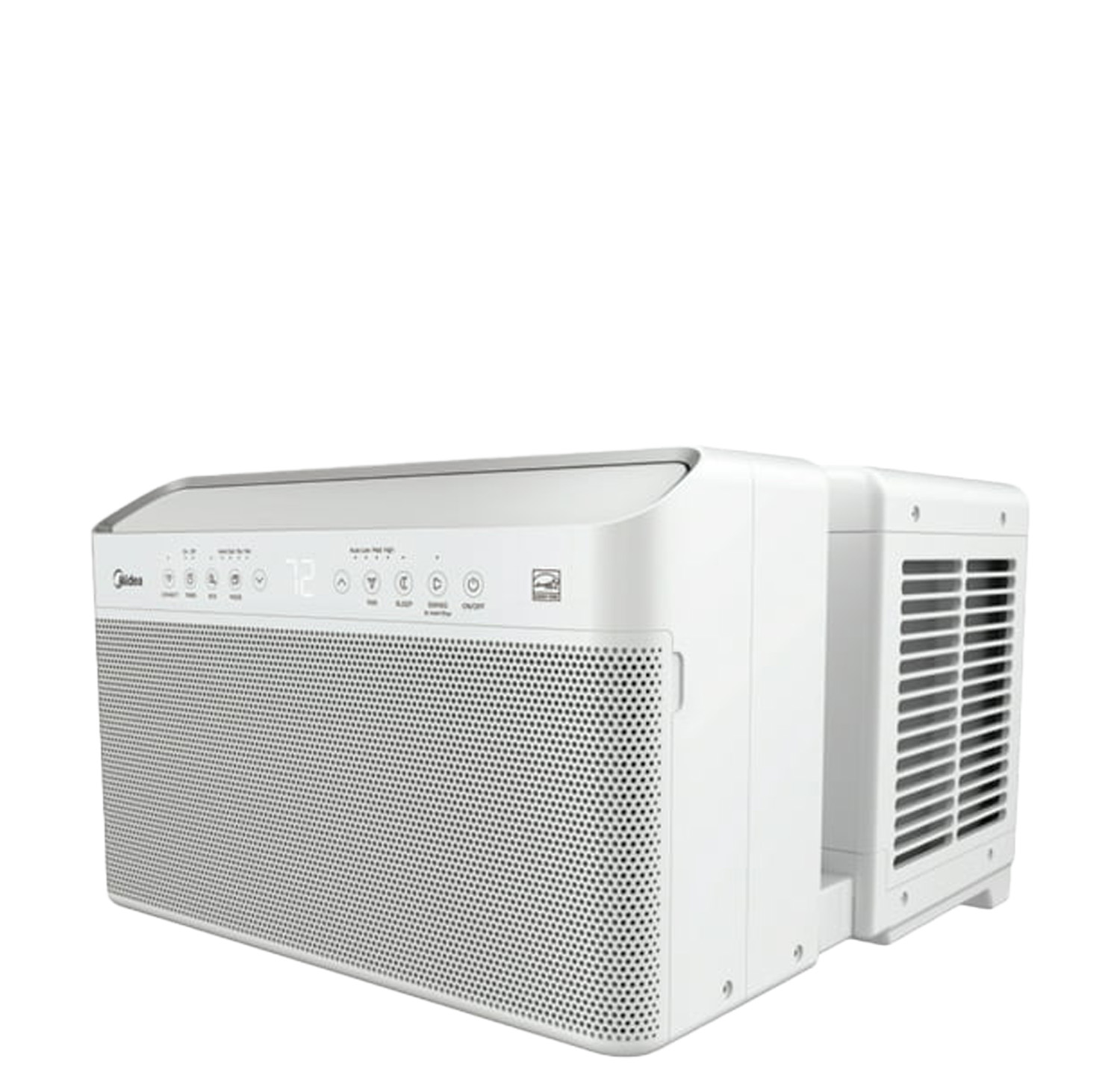
An innovative U-shaped design makes the Midea air conditioner stand out for its looks, as well as its low noise and great efficiency.
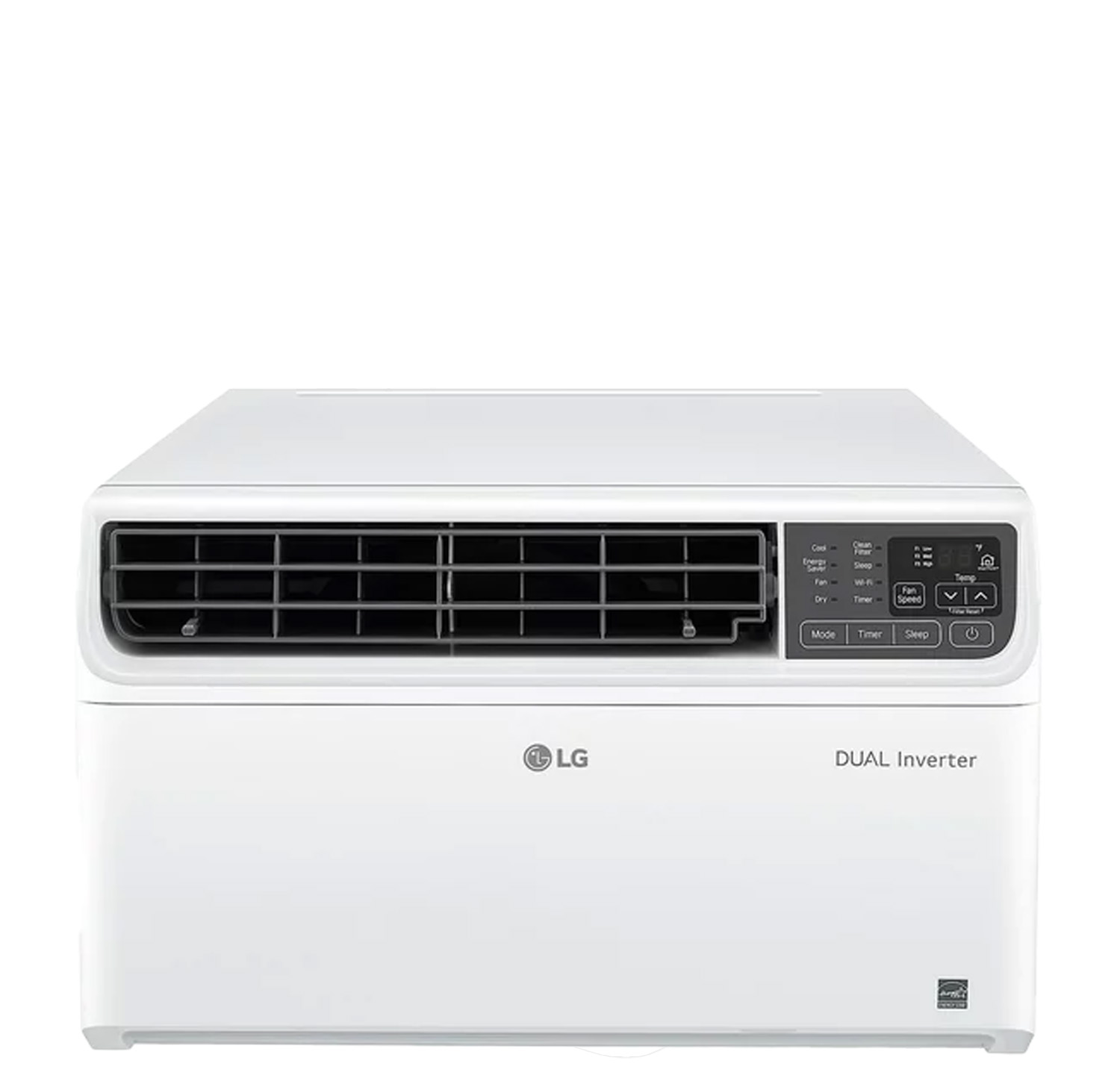
A great design, powerful yet efficient performance, and availability in the widest range of sizes make the LG our top pick.
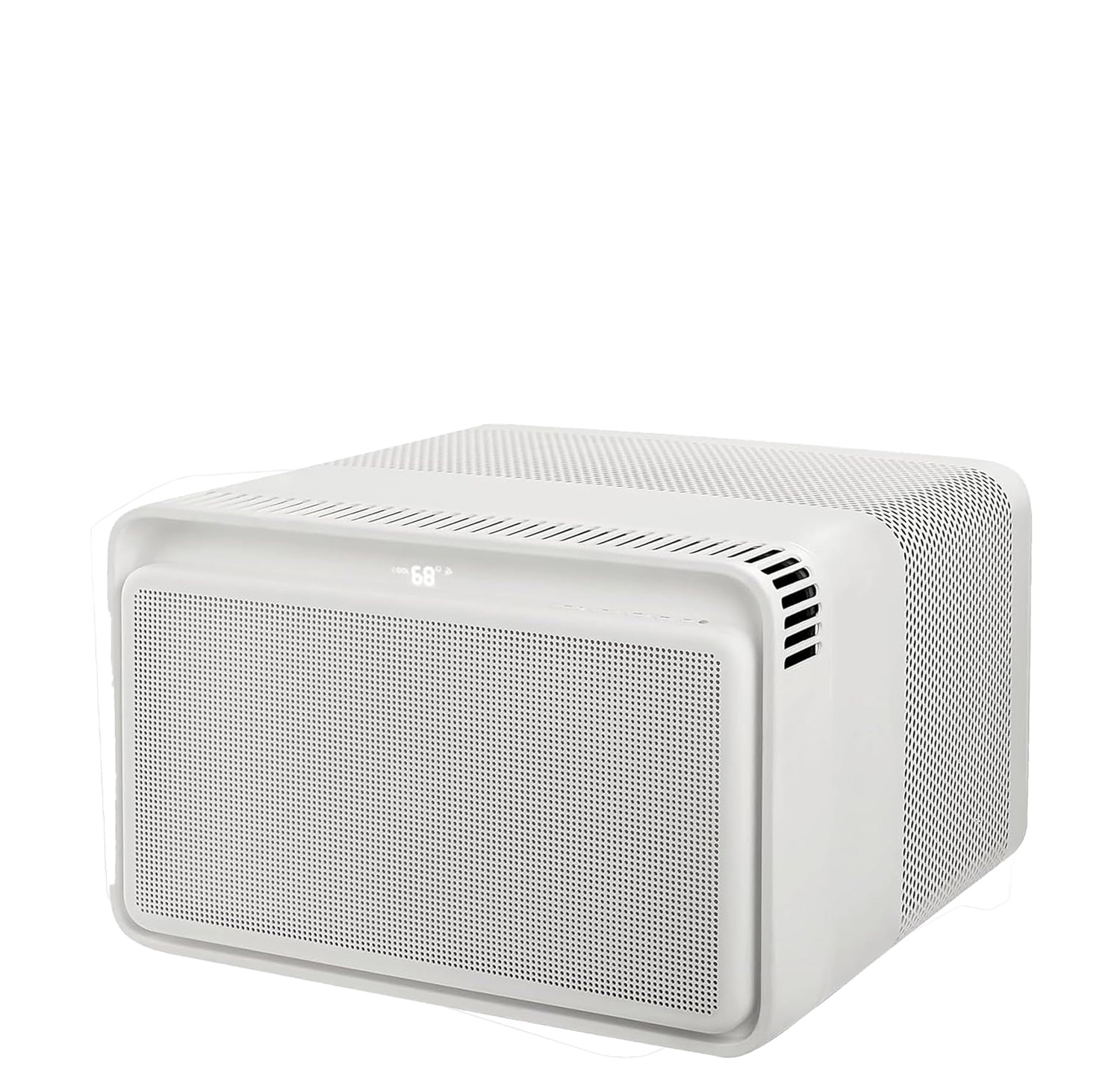
This model comes in a 6,000 BTU size, making it best suited for those with smaller spaces to cool. It's also got a great look.
Midea has issued a recall for 1.7 million of its U-shaped air conditioners sold between 2020 and 2025 after reports that water can pool in the bottom, creating conditions for mold to develop, and which can lead to potential respiratory issues. Owners can contact Midea to get a refund or a free repair kit to fix the problem.
The best smart air conditioners
Why you can trust Tom's Guide
Best overall
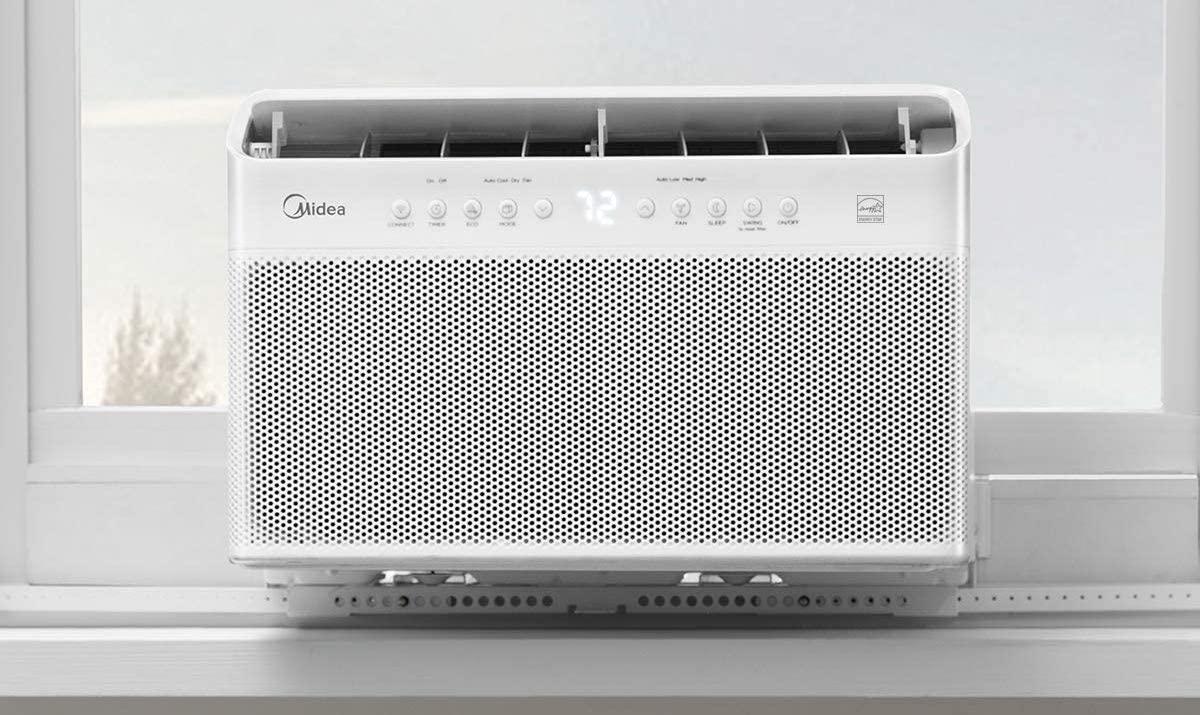

Specifications
Reasons to buy
Reasons to avoid
The Midea U Inverter Window Air Conditioner gets its name from its unique "U" shape. That's right, there's a large slot in the middle of this smart air conditioner, which allows you to slide your window up and down.
This is the only window air conditioner I tested that also comes with a support bracket, which makes installing it a lot easier than other units. It's been slightly redesigned since the original, too, so there's an almost perfect seal between the inside and outside of my home.
Not only does this feature provide a much more effective barrier — so your air conditioner doesn't have to work as hard to keep your room cool — but the company also claims that the Midea U is quieter and more efficient than similar window air conditioners. Indeed, even when it was going at full tilt, I was able to be clearly heard on work calls.
Also because of its design, this air conditioner doesn't require you to use those plasticky side baffles, which are not only ugly, but aren't very durable, either.
This model also has a pretty sizable remote control, which worked ok during my testing. One of the features I liked most is that I could turn off the AC's display and sounds, so I wouldn't hear a loud beep if I changed the temperature in the middle of the night.
Midea updated this model so that it supports Matter (meaning you can connect it to every major smart home system).
The original Midea U was able to keep my attic office pleasantly cool throughout the day for five years and counting, and the new model is performing just as well, if not better.
Read our Midea U smart air conditioner review.
Best for large rooms


Specifications
Reasons to buy
Reasons to avoid
I've used the 10,000 BTU version of LG's Dual Inverter smart air conditioner for seven summers, and it's reliably kept the first floor of my house (a living room, dining room, and kitchen) comfortable, even on the hottest of summer days.
I like the fact that the face of the unit is solid — the cool air comes out a top vent — which makes it look more attractive than other air conditioners. LG's remote is comfortable and easy to use, too.
Models range in size from a 8,000-BTU model (good for 450 square feet) up to a massive 23,500 BTU model, good for 1,4400 square feet, so you can pick one that best suits your room size.
All models use what LG calls a dual-inverter compressor, which continually adjusts its speed, rather than turning on and off like a traditional compressor. LG says this technology should provide energy savings of up to 25% and make the device quieter than most air conditioners.
I only have two issues with this model: When I first tested it, LG's app needed a bit of work, but things have improved a bit.
My other nitpick is that it's heavy. The 10,000 BTU model is 63 pounds, and the 18,000 BTU model checks in at 110 pounds, so it's a bit of a struggle for me and my wife to hoist this thing in and out of our window every year.
Read our full LG Dual Inverter Window Air conditioner review.
Best for small rooms
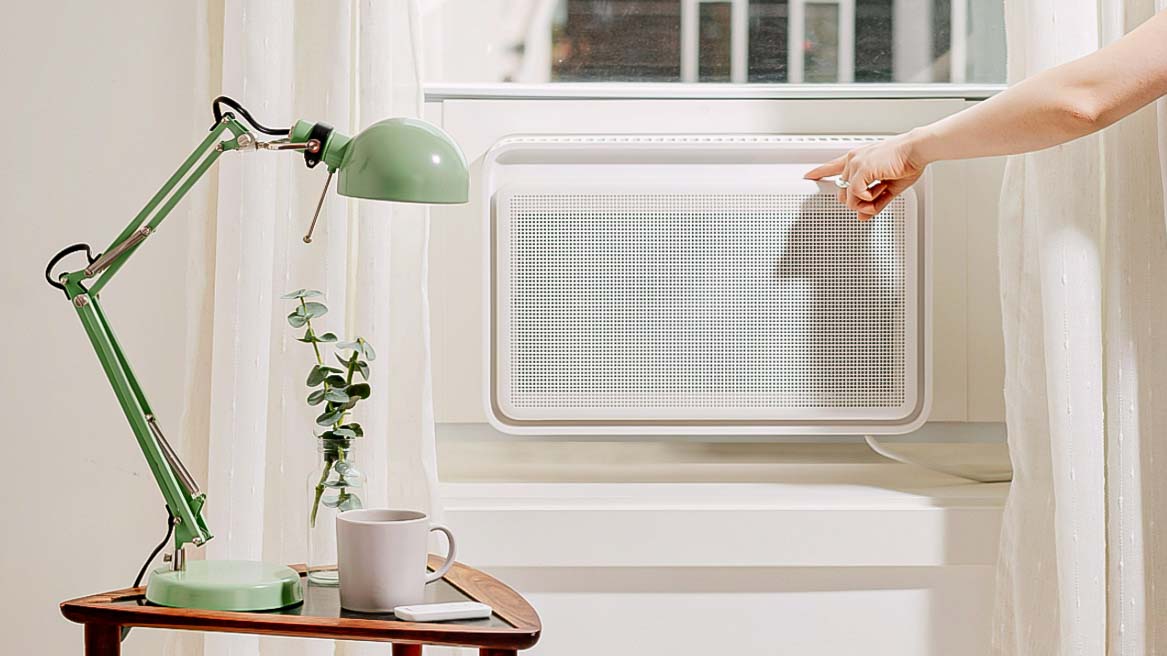

Specifications
Reasons to buy
Reasons to avoid
One of the biggest issues with traditional window air conditioners is that they're, well, ugly. If you're going to be staring at something all summer long as it cools your apartment, it should at least look nice.
Enter the Windmill, which is attractive as it is performant. The Windmill has a large grille in the front with a subtle vent at the top which directs cool air up toward the ceiling, so it can then filter down throughout your room. The Windmill's surrounding baffles are a solid piece of plastic, rather than the accordion-style that's so common on many window AC units.
Our reviewer found that the Windmill was effective at cooling our apartment, but it has a lower energy-efficiency rating than the Midea U and the LG. And, as the Windmill only comes in two sizes (6,000 and 8,300 BTUs), it's best for smaller spaces.
Read our full Windmill air conditioner review.
Quietest air conditioner
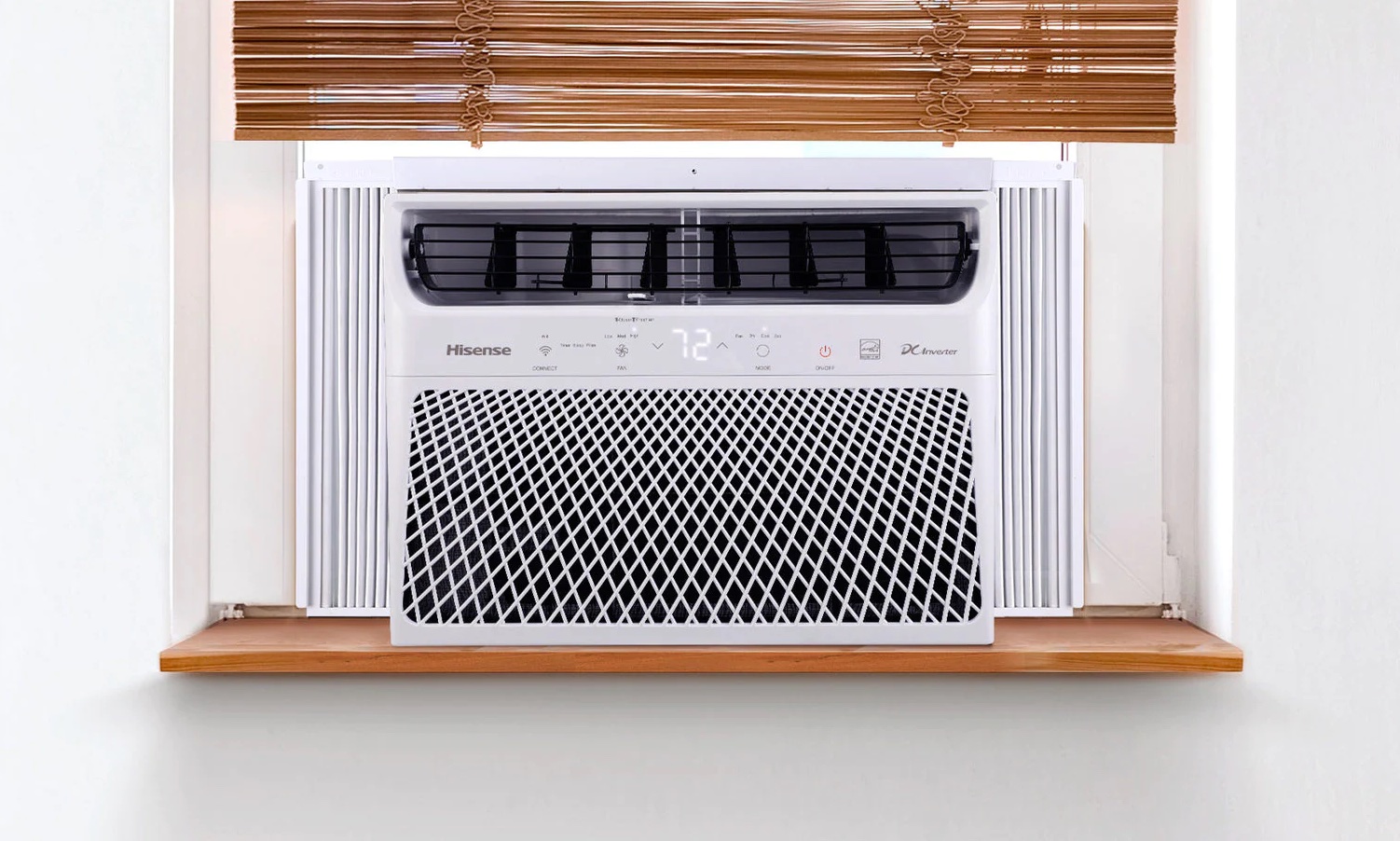

Specifications
Reasons to buy
Reasons to avoid
I have a kid who hates the sound of air conditioners when she's sleeping, but we needed to keep her room cool. Enter Hisense's smart window air conditioner.
Like the LG and the Midea, this Hisense window air conditioner uses an inverter compressor, which not only makes it very efficient — one of the most efficient I've tested — but also one of the quietest window air conditioners, too.
In my tests, we heard more noise coming from outside our home than we did from the Hisense A/C. That meant I could set it on a very low level, and it would keep my kid's room cool and quiet at the same time.
The Hisense comes in just two sizes — 8,000-BTU model that costs $399, and can cool rooms around 350 square feet in size, and a 14,000-BTU model for 700-square-foot rooms — so it's not the best if you have a lot of area to cover.
But for small rooms where you place a premium on noise (or the lack thereof), the Hisense smart window air conditioner is definitely worth your consideration.
Read our full Hisense smart window air conditioner review.
Matter-compatible
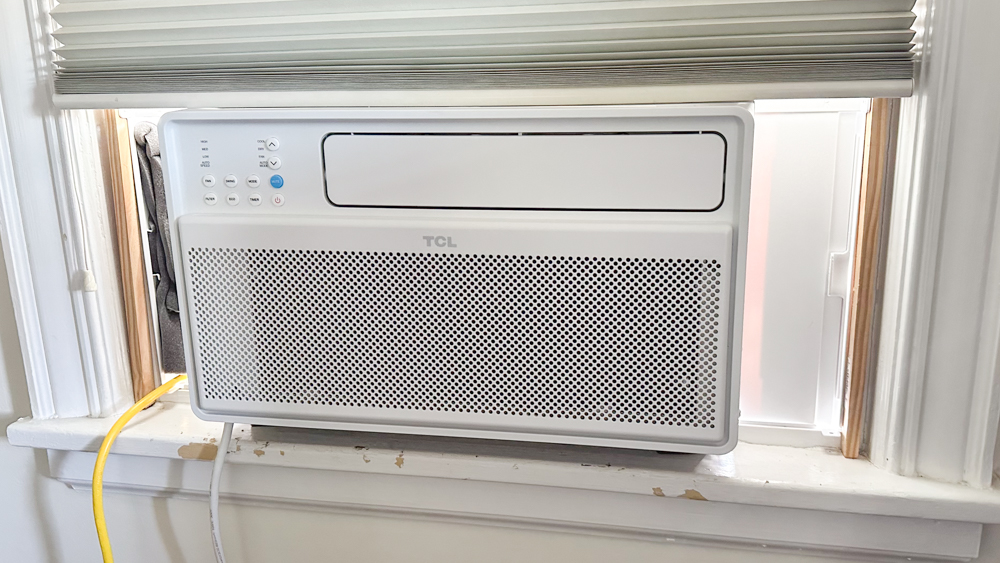

Specifications
Reasons to buy
Reasons to avoid
TCL, the company better known for its TVs, has expanded into home appliances, such as this window air conditioner. And, based on my tests, it's made a great first impression. The Smart Inverter Window Air Conditioner is easy to set up, has very intuitive controls, and is both quiet and efficient.
While its design isn't as innovative as the Midea U, I liked the TCL's window brackets and telescoping side panels, which feel much more durable than the traditional accordion-like baffles found on most window air conditioners.
And, because the TCL unit comes with Matter, it works with every major smart home system: Alexa, Google Assistant, HomeKit, and SmartThings.
My only real issue with TCL's A/C is that the 8,000-BTU model felt a bit underpowered, as it took longer to cool down my bedroom than did comparable models. Otherwise, it's a very capable air conditioner.
Read our full TCL Smart Inverter Window Air Conditioner review.
Best portable AC
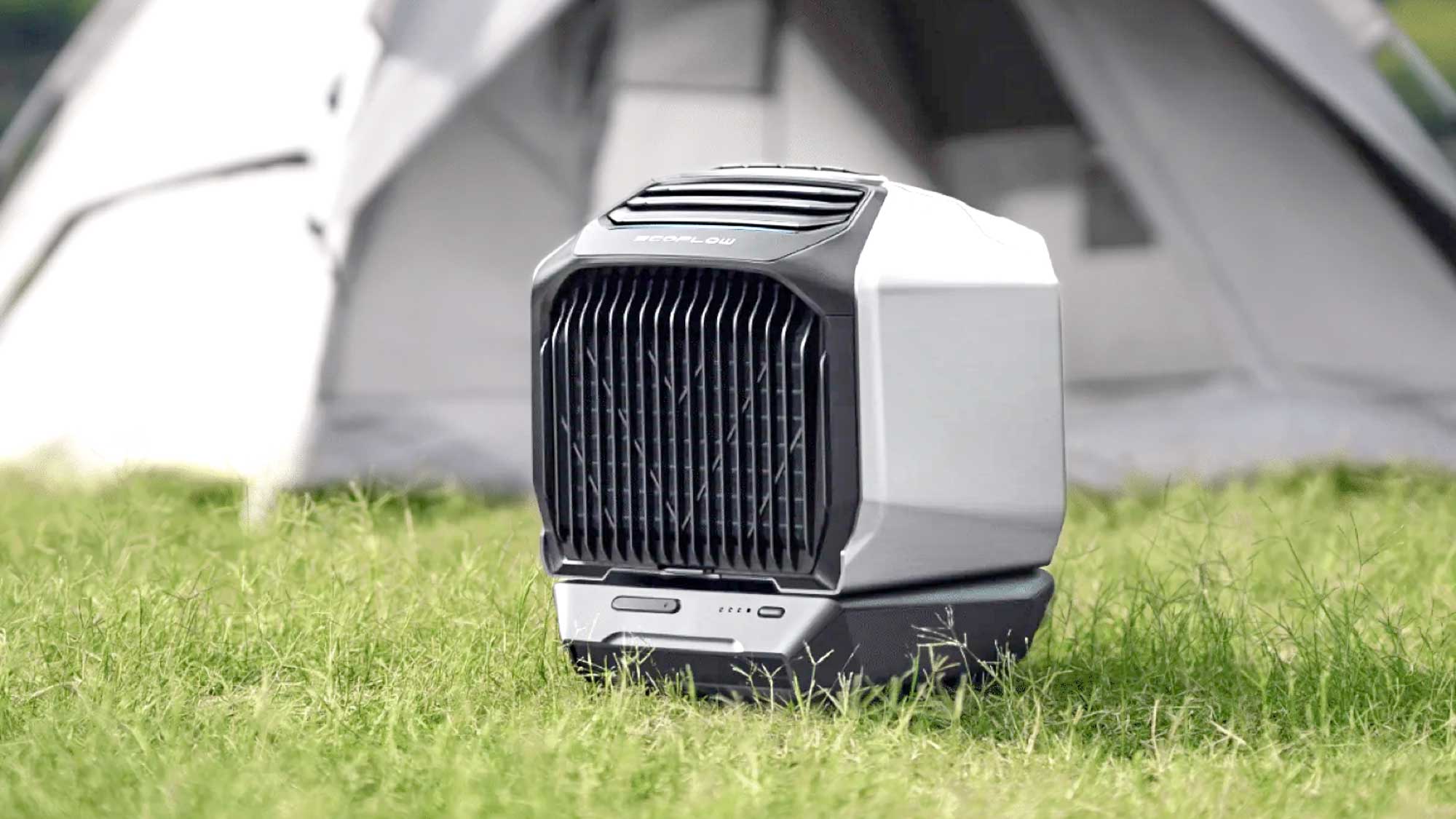

Specifications
Reasons to buy
Reasons to avoid
The EcoFlow Wave 2 is not just a great portable air conditioner, but in the cooler months, it doubles as a space heater, too. That's because the Wave 2 is a heat pump, so it can both heat and cool a space — great for those unheated rooms in your house that are freezing in winter but sweltering in the summer. It's best for smaller spaces, as it's rated for rooms around 110 square feet, but that makes it ideal for RVs and campers.
The Wave 2 has a few more tricks: You can connect it to an optional battery pack or solar panels to keep it charged while off the grid. You can control the Wave 2 via a smartphone app, and connect it to Google Assistant.
When it was running, we found it to be fairly quiet — it was about as loud as a typical space heater — and it was also very efficient, consuming around 536 watts when heating and 286 watts when cooling. However, at around $1,300, it's a lot more expensive than most window air conditioners.
Read our full EcoFlow Wave 2 review.
Also tested
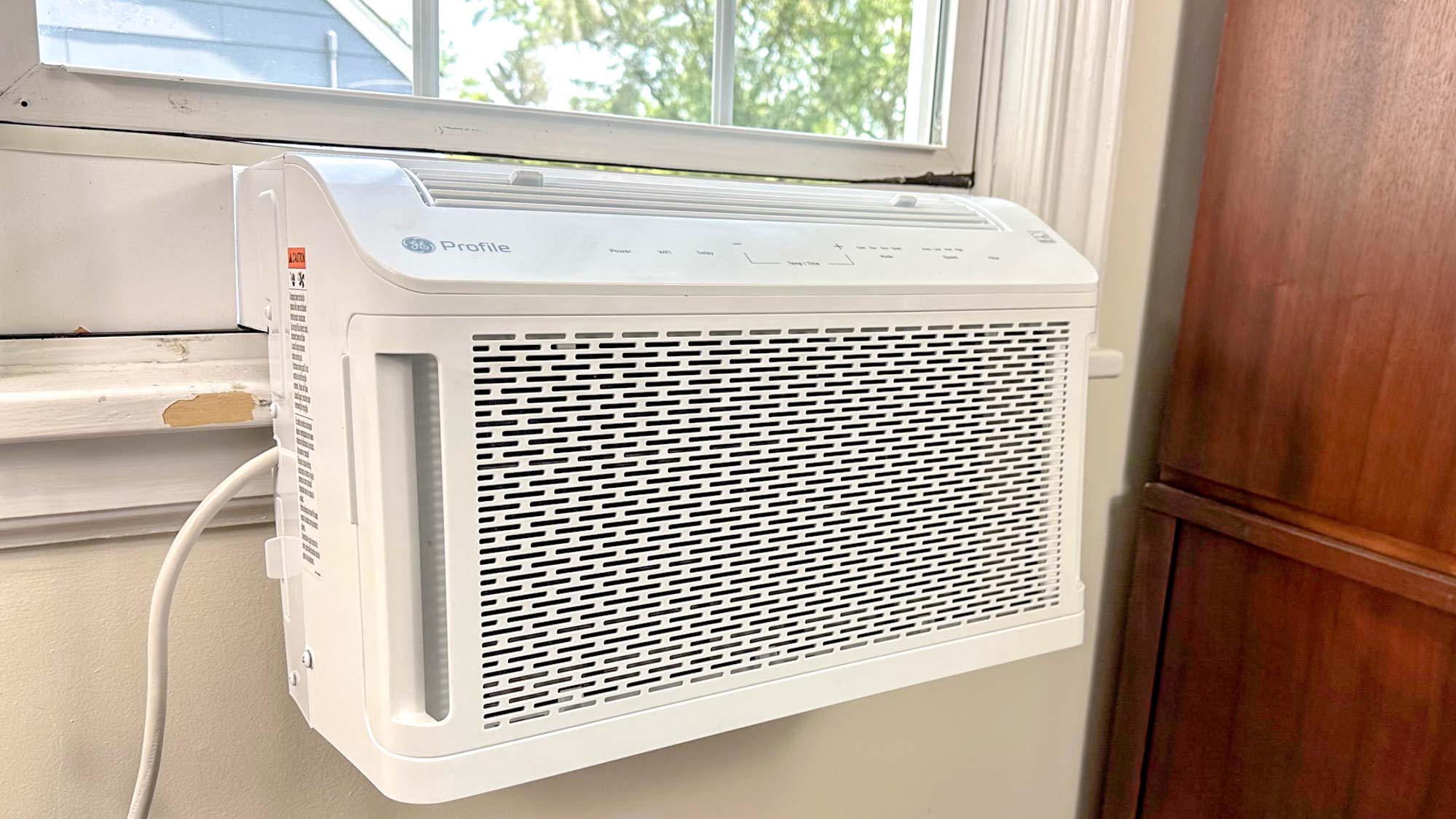
Specifications
Reasons to buy
Reasons to avoid
Like the Midea U, the GE Profile Clearview window air conditioner has a U shape that not only lets more light in, but also does a better job at keeping hot air out. In this case, though, the U is upside-down, which lets even more light in than the Midea unit. It also uses inverter technology, making it not only quieter but more efficient than older window air conditioners.
However, I found that the GE Clearview was trickier to install than other models, requiring me to take it in and out of our window a few times before I got things right. And, the writing on the remote was hard to read, especially in dim lighting. It's also about $100 more than competing models, so unless you really want to let as much light in as possible, you might want to consider other options first.
The GE Profile Clearview window air conditioner is available in four sizes: 6,100, 8,300, 10,000 and 12,000 BTUs; however, only the latter two use inverter technology, which is both quieter and more efficient than other air conditioners.
Read our full GE Profile Clearview window air conditioner review.
Smart air conditioner controllers
The devices listed below are wireless accessories that connect to the internet, and let you control older non-smart air conditioners remotely. You use an app on your phone, which sends the command through the cloud to the accessory, which then sends the command to your air conditioner. Most older air conditioners that have a remote should work with one of the options below, but check to make sure it's compatible before purchasing.
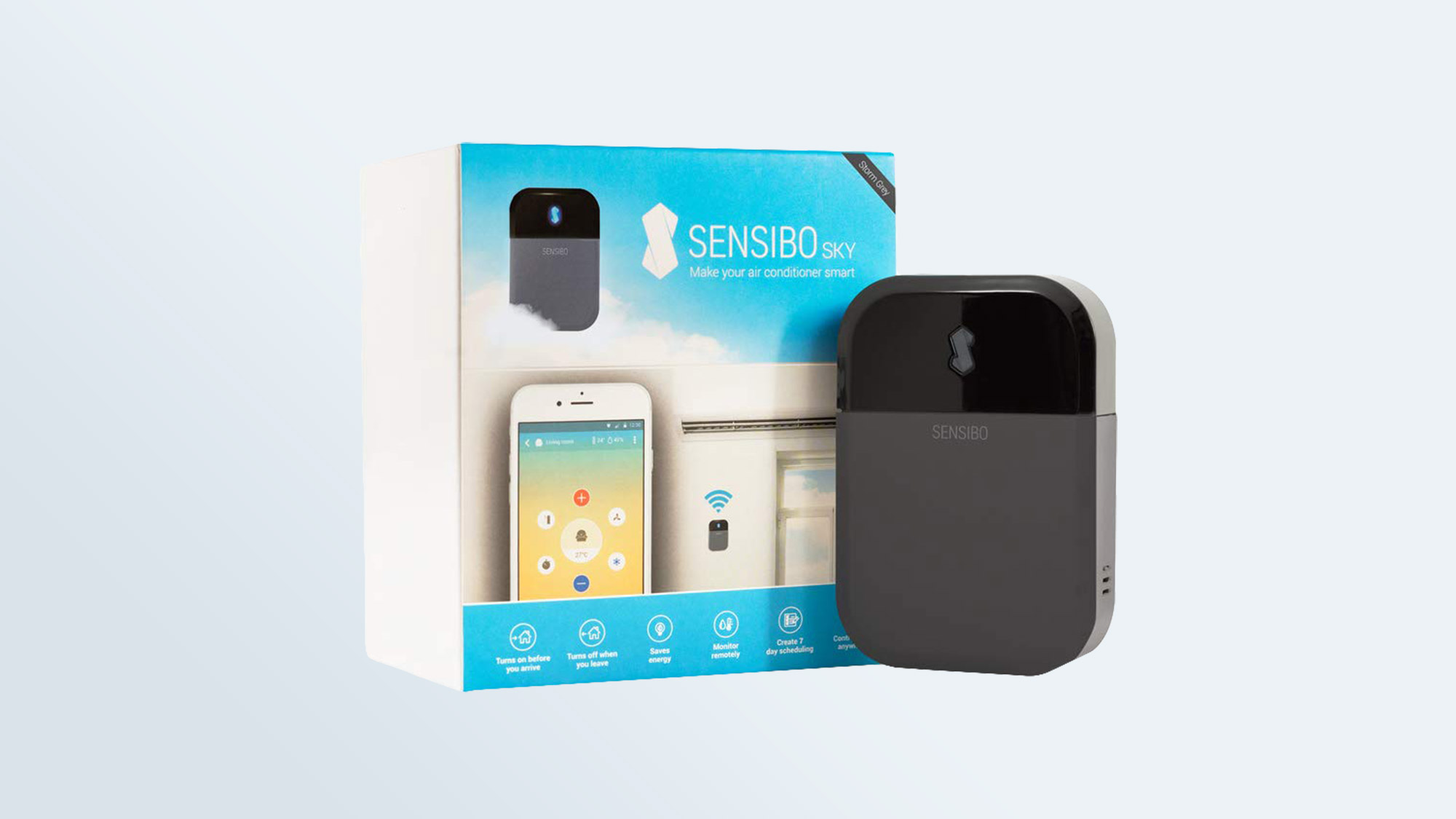
The Sensibo Sky can make your "dumb" air conditioner smart, by sending commands via infrared to turn your air conditioner on and off; you can control the Sensibo Sky from an app on your smartphone, and set timers and rules for when the air conditioner should run.
In our Sensibo Sky review, we liked that it has a geofencing feature; it can sense when you're getting near home, and start up the air conditioner to cool things down for when you arrive. Conversely, it can automatically shut off your A/C when you leave the house. The one thing we wish it had, though, was a display on the device itself.
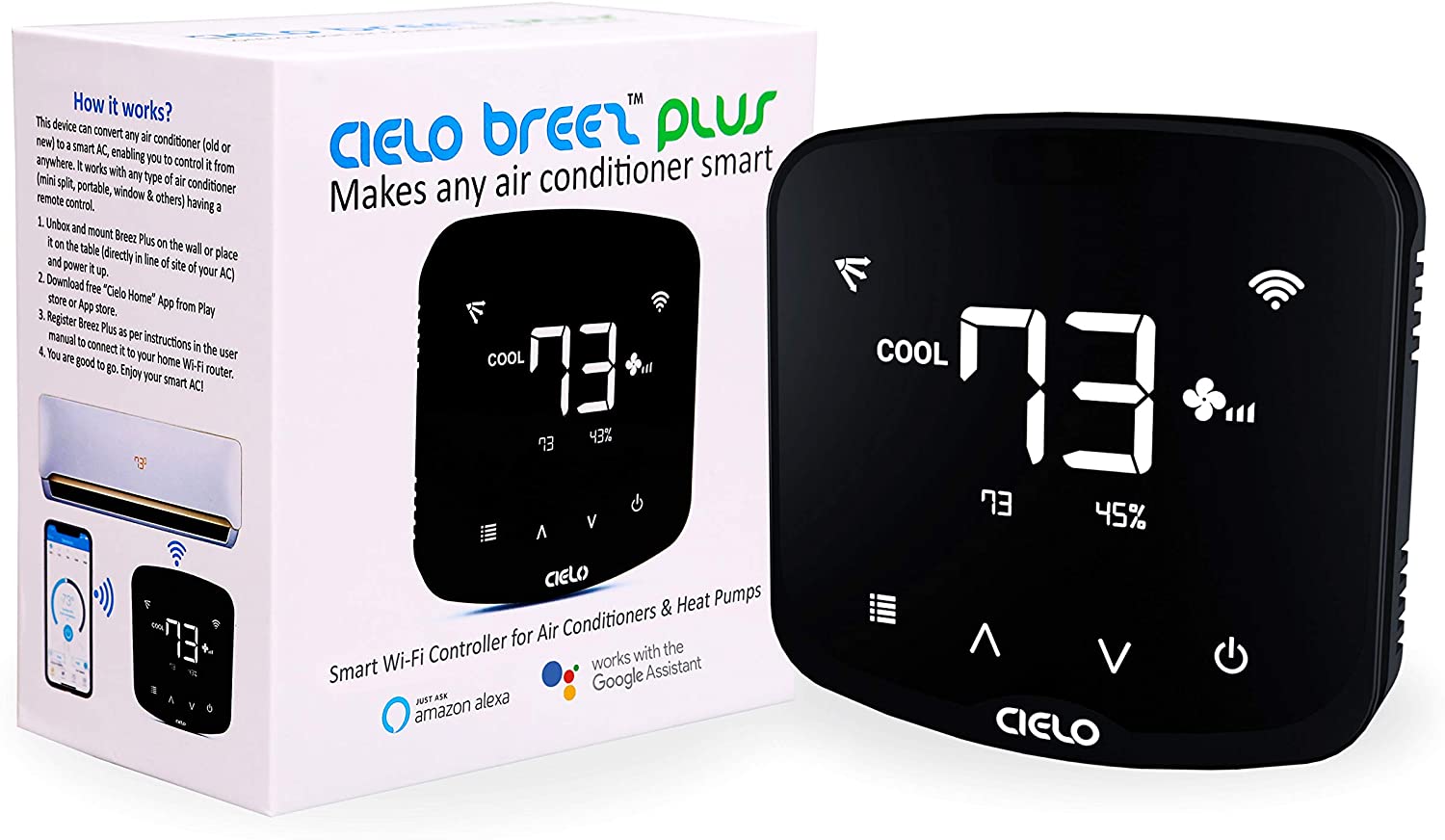
The Cielo Breez Plus is another good option for making your air conditioner smart. The Breez Plus also sends signals via infrared to your A/C unit, and can be controlled from a smartphone app, or with Alexa or Google Assistant.
One thing we also liked about the Cielo Breez Plus is that it has not just a large display, but controls on the device itself to let you adjust the temperature, so you don't have to pull out your smartphone to make it cooler. You can also control the A/C's fan speed, set temperature range locks, and see your energy usage history.
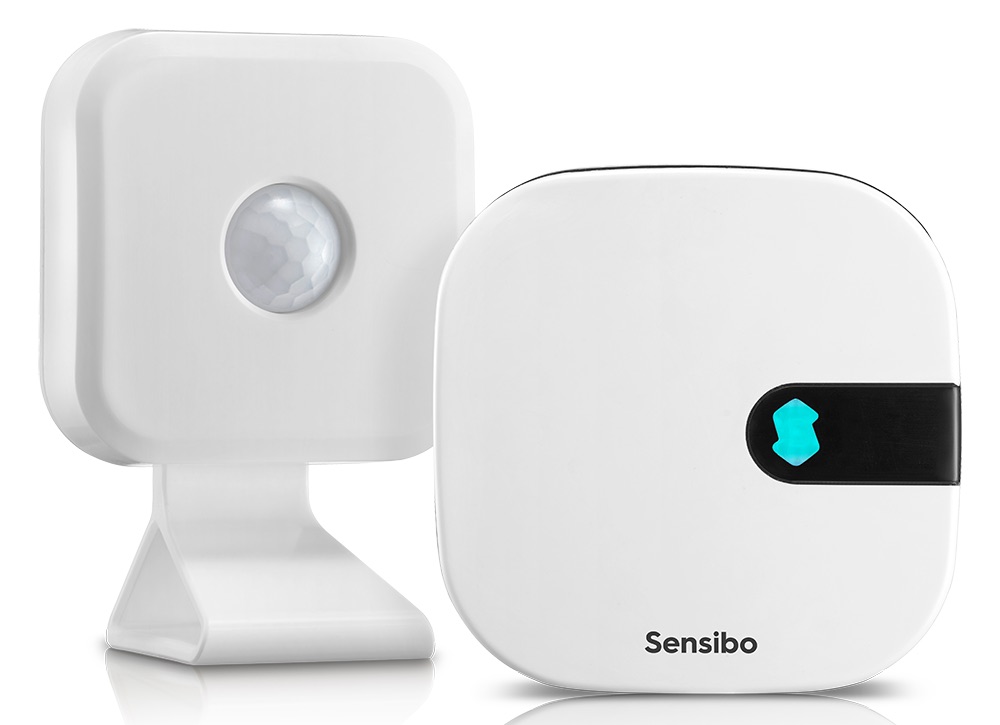
Like the Sensibo Sky, the Sensibo Air can control your "dumb" air conditioner via infrared commands, letting you program it via a smartphone app. However, the Sensibo Air has an extra feature: A separate room sensor that not only measures temperature and humidity, but also detects your presence. That way, you can program the Sensibo Air to turn off your air conditioner when no one's in the room.
It's a smart addition that will help save you money over the long run, even if the Sensibo Air is more expensive than other air conditioner add-ons.
How we test the best smart air conditioners
First thing's first: An air conditioner — smart or not — has to be able to cool down a room quickly and efficiently. To test a smart air conditioner, we set it up in a home or apartment and see how quickly it cools a room to a set temperature. Because we can't control for outside temperatures, this is a somewhat rough estimate, but gives us a good sense of how well it performs.
While it's cooling, you don't want to be annoyed by the noise it makes, so we also use a sound meter to determine how much noise a smart air conditioner puts out while it's at its max and minimum power. We've found that the newer models, which use inverter technology, tend to be quieter than older models that use compressor technology.
Speaking of which: We also take into account the Energy Efficiency Rating of a smart thermostat in our ratings. Here too, the inverter-style units are often much more efficient. That means you'll be spending less money on your cooling bill in the summer.
Because these are smart thermostats, we also take a look at their apps to see how easy they are to program and connect with other smart assistants, such as Alexa.
Last — but not least — we also look to see how easy an air conditioner is to install in a window. Because you'll be putting it in and taking it out each year, it should be easy to mount and remove.
What size air conditioner should you buy?
Above all else, you should base your buying decision on two things: BTUs and energy efficiency. Air conditioner "sizes" are determined by their BTU cooling capacity. You want a unit that's just powerful enough to cool your room or area. If you get an air conditioner that’s too large, it’ll chill the room before it’s able to remove the humidity, leaving you cold and clammy.
This chart from Energy Star shows how many BTUs you need in terms of room size; the organization also has a handy calculator on its site for calculating your room size.
Energy Star also lists other guidelines for determining the proper size for an air conditioner in your room. For example, if the room gets a lot of sun, you should increase the capacity of your choice of air conditioner by 10 percent; if the room is heavily shaded, decrease the capacity by 10 percent.
You also want to look for units with a high energy-to-efficiency ratio (EER) — that is, the amount of energy needed to cool a room. The higher the EER, the better. You should be able to find this information in the product listing or the packaging. You also want a unit with a good Energy Star rating, another indicator of energy efficiency.
Room Size (square feet) | BTUs |
100 to 150 | 5,000 |
150 to 250 | 6,000 |
250 to 300 | 7,000 |
300 to 350 | 8,000 |
350 to 400 | 9,000 |
400 to 450 | 10,000 |
450 to 550 | 12,000 |
550 to 700 | 14,000 |
700 to 1,000 | 18,000 |
1,000 to 1,200 | 20,000 |
1,200 to 1,400 | 23,000 |
1,400 to 1,500 | 24,000 |
1,500 to 2,000 | 30,000 |
2,000 to 2,500 | 34,000 |
How does an air conditioner work?
To cool your home, air conditioners rely on good ol' physics: Inside an A/C unit are a bunch of pipes filled with a gas of some kind. The air conditioner first compresses the gas, and then releases it through a series of tubes.
As the gas expands, it cools rapidly, making the tubes cold. A fan then blows air over those cold tubes and into your house.
In the past, air conditioners used compressor technology to condense the gas, but in more recent years, companies have started using inverter technology, which is not only quieter, but far more efficient. All of our top picks — LG, Midea, and Windmill — use inverters, which we recommend.
How much does a smart air conditioner cost?
Because they're relatively new smart air conditioners are a bit more expensive. For example, a smart Frigidaire 8,000 BTU AC costs $329 on Amazon, whereas a nonsmart 10,000 BTU Frigidaire model costs about $30 less. Still, the price difference is becoming narrower. That being said, it's not such a huge difference that you should toss out a perfectly good air conditioner just to get one that has some smarts.
Types of air conditioners
Apart from central AC systems — which you would control using a smart thermostat such as the Ecobee SmartThermostat — there are four types of air conditioners from which you can choose. Each has its benefits and trade-offs.
Portable air conditioners: These units are each about the size of a small suitcase and have large exhaust tubes that you must stick out a window. They're the easiest to install, but they are by far the least efficient type of air conditioner.
In-window air conditioners: Perhaps the most common type, these air conditioners simply slide into an open window. After portable units, they're the easiest to install, but they will block the lower part of your window and prevent you from opening that window. Also, you have to block the gaps on either side of the air conditioner to prevent hot air from entering and cold air from escaping.
In-wall air conditioners: Very similar to in-window units, these get inserted through an opening in your wall. They're generally more expensive than in-window units and may require professional installation — especially if you need to cut a hole in a wall of your house — but they won't take up valuable window space, and they allow less air leakage.
Ductless air conditioners: Also known as split air conditioners, these have an indoor section connected to an outdoor unit by a small pipe. While they're the most efficient of the different types listed here, they're also the most expensive to install; you'll need a professional. And the appearance of the indoor section can be polarizing.
Air conditioner deals
Get instant access to breaking news, the hottest reviews, great deals and helpful tips.

Michael A. Prospero is the U.S. Editor-in-Chief for Tom’s Guide. He oversees all evergreen content and oversees the Homes, Smart Home, and Fitness/Wearables categories for the site. In his spare time, he also tests out the latest drones, electric scooters, and smart home gadgets, such as video doorbells. Before his tenure at Tom's Guide, he was the Reviews Editor for Laptop Magazine, a reporter at Fast Company, the Times of Trenton, and, many eons back, an intern at George magazine. He received his undergraduate degree from Boston College, where he worked on the campus newspaper The Heights, and then attended the Columbia University school of Journalism. When he’s not testing out the latest running watch, electric scooter, or skiing or training for a marathon, he’s probably using the latest sous vide machine, smoker, or pizza oven, to the delight — or chagrin — of his family.
